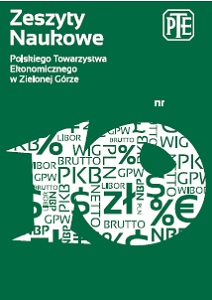Tariff Safeguard Measures of the European Union Internal Market – The Role of Common Customs Tariff
Tariff Safeguard Measures of the European Union Internal Market – The Role of Common Customs Tariff
Author(s): Małgorzata CzermińskaSubject(s): Economy, Supranational / Global Economy
Published by: Polskie Towarzystwo Ekonomiczne w Zielonej Górze
Keywords: common trade policy; Common Customs Tariff; tariff rate; most favoured nation clause; wspólna polityka handlowa; wspólna taryfa celna; stawka celna; klauzula najwyższego uprzywilejowania
Summary/Abstract: The principal and traditional instruments for protecting the internal market of the European Union (EU) are customs duties and the Common Customs Tariff. The customs tariff integrates the nomenclature (a detailed list of goods) and the applicable rates of duty on the basis of which customs duties are calculated and applied in respect of specific types of goods on their import into the European Union. The Common Customs Tariff of the EU is used not only as the basis for the calculation of duties, but also for collecting data on the statistics of external trade, determining products subject to exciseduties, products entitled to a reduced rate of VAT, defining origin rules etc. The main goal of this paper is to demonstrate the role served by tariff measures – and in particular, the common customs tariff – in the protection of the European Union’s internal market. The specific aim is to verify the research hypothesis that the importance of customs duties as an instrument used to protect the EU’s internal market is decreasing.The very structure and types of customs duties contained in that structure were presented, with special attention being directed to their rates depending on the groups of goods and to trends of their changes over time. Furthermore, the amount of customs revenue and its share in the EU’s general budget in the past two decades was discussed. An analysis was conducted to examine the rates and types of and changes in customs duties in the EU customs tariff, which confirmed the research hypothesis that customs duty rates generally no longer play any prominent role in the protection of the internal market. Throughout more than twenty years, they have showed a downward trend, as from the mid-1990s (an average applied customs duty rate has dropped by 9 per cent, whereas an import-weighted average duty declined by more than four times). The zero customs duty (MFN) rate applies to nearly 26% of all tariff lines, and what is even more, the most of goods (30% of all tariff lines) are subject to low customs duty rates, fixed at 0% to 5%, inclusive. Nevertheless, as regards certain goods, mainly agricultural products (dairy produce, sugar and confectionery, cereals), but also textiles, clothing, cars, customs duties are still considered a barrier to access to the EU market.
Journal: Zeszyty Naukowe Polskiego Towarzystwa Ekonomicznego w Zielonej Górze
- Issue Year: 6/2019
- Issue No: 10
- Page Range: 48-64
- Page Count: 17
- Language: English

